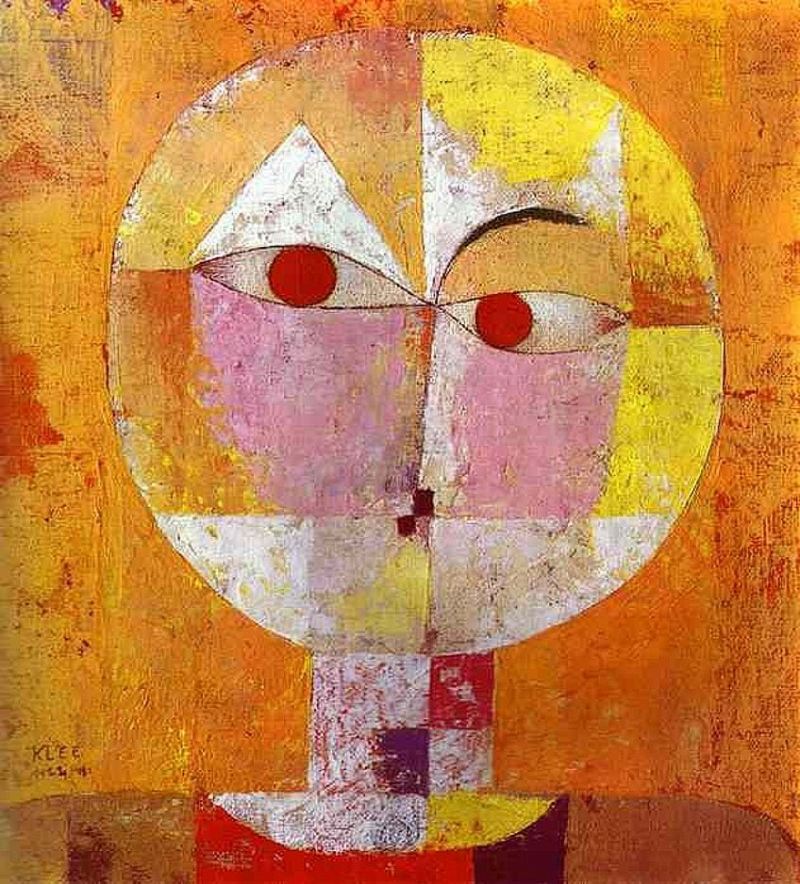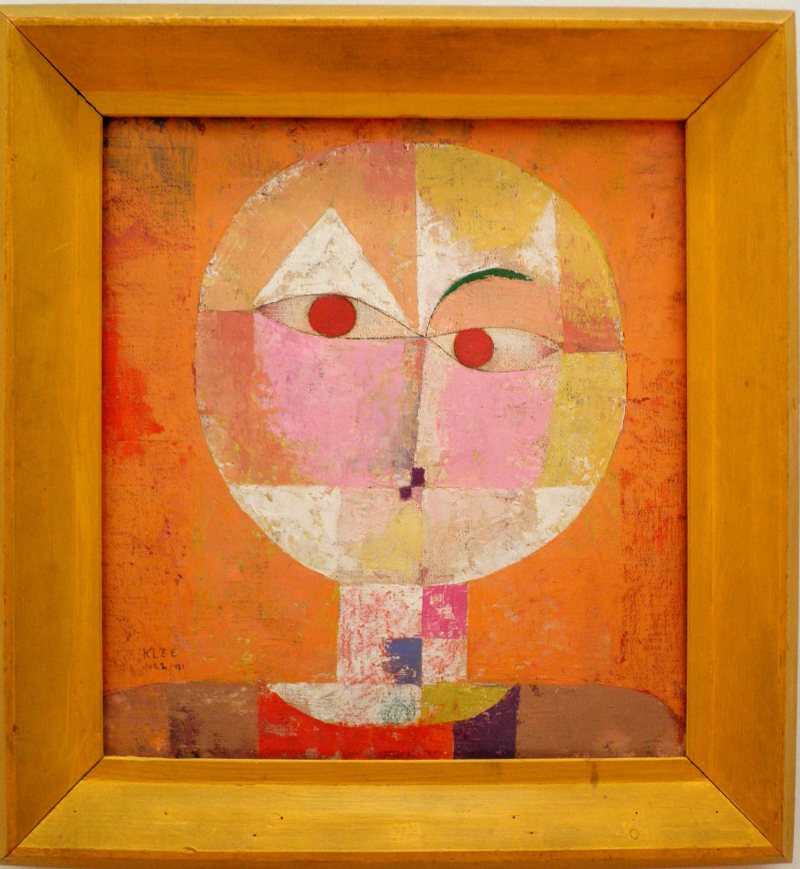Senecio (1922)
Paul Klee, a German artist who became well-known during the Abstract Art movement, produced some of the best examples of the movement in history. In addition, Klee was associated with Expressionism, Cubism, and Surrealism, and the majority of his paintings exhibit an excellent understanding of color theory. Senecio, his most well-known abstract painting, was created in 1922.
Klee depicts what looks to be a human head that has been divided into several rectangles of orange, yellow, red, and white in Senecio, also known as Head of a Man Going Senile. The title's allusion to artist-performer Senecio further suggests that the various colored squares mimic the type of mask or patches typically worn by a harlequin.
Senecio initially appears to not represent a face because of the abstraction the many squares produce. However, while focusing on the triangle and curved line above both eyes, viewers can see a face within the blocks because it appears to have raised eyebrows. The artwork is seen as belonging to both Cubism and Abstract Art because of the geometric perfection it displays, which shows a significant amount of Cubist influence.
Klee was able to modify graphic components to the point that they could take on the appearance of a fairly recognized figure in the eyes of viewers by employing straightforward colors and ambiguous shapes. Due to the mask-like appearance of the face, Senecio also reflects Klee's sense of humor and interest in African culture.
Senecio's use of color, shape, and illusion illustrates the fluid nature of the link between art and society at the period because the face Klee represented might easily take on a different form if viewers interpreted it in a different way. Senecio makes fun of children's paintings in addition to this theoretical idea because Klee's intended figure can still be seen despite the use of hazy contours and sparse facial characteristics, which are typical of children's artwork.
Artist: Paul Klee (1879 – 1940)
Date Painted: 1922
Medium: Oil on canvas mounted on a panel
Dimensions: 40.5 cm x 38 cm (15.9 in x 15 in)
Where It Is Currently Housed: Kunstmuseum Basel, Switzerland












